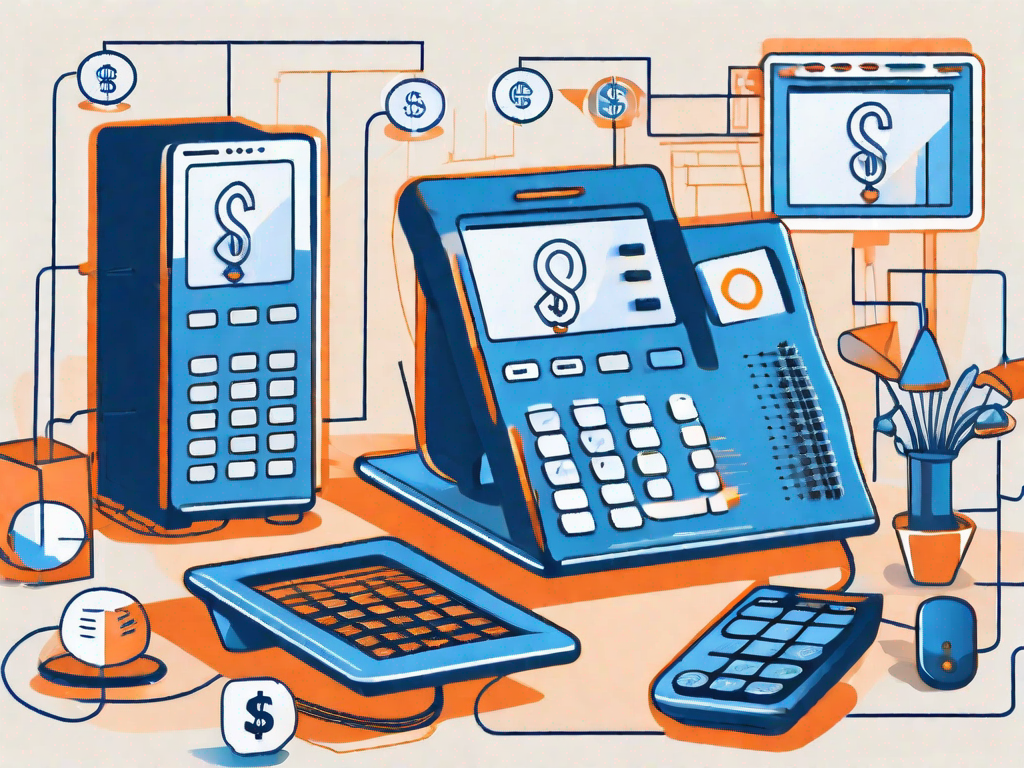In the fast-paced world of customer service, contact centers are constantly seeking ways to improve efficiency and streamline operations. One important metric that can help in this endeavor is the calculation of Cost Per Interaction (CPI).
Understanding and utilizing this valuable KPI can provide valuable insights into the financial aspects of running a contact center and help guide strategic decision-making. In this article, we will take a deep dive into the concept of cost per interaction, its components, the steps involved in calculating it, and how to analyze the results. We will also explore how contact centers can implement CPI into their overall strategy for enhanced performance and cost management.

What Goes Into the Calculations of Cost Per Interaction in a Contact Center
Cost Per Interaction is a metric that quantifies the financial outlay attributed to each customer interaction. It takes into account various cost factors, such as labor costs, overhead costs, and technology infrastructure costs.
By calculating and analyzing CPI, contact centers can gain insights into their operational expenses and make informed decisions regarding resource allocation and process optimization.
To help manage overall operational expenses, it’s also worth exploring ways to reduce utility costs—for instance, by using services that allow you to Compare Business Energy.
The CPI Formula
Calculating CPI involves dividing the total cost incurred by the contact center during a specific period by the number of customer interactions that took place within that same period. This provides a clear picture of how much it costs the contact center to handle each interaction on average.
For example, if a contact center incurs $10,000 in costs over a month and handles 1,000 customer interactions during that same period, the cost per interaction would be $10. This means that, on average, each customer interaction costs the contact center $10.
Importance of Cost Per Interaction in a Contact Center
The significance of Cost Per Interaction cannot be overstated in a contact center environment. By understanding the true cost of each customer interaction, contact centers can identify cost drivers and implement cost-saving strategies, ultimately leading to improved profitability.
By analyzing CPI, contact centers can identify areas of inefficiency and explore opportunities for process optimization. For example, if the cost per interaction is higher than desired, the contact center can investigate the reasons behind it. It could be due to excessive handling time, high employee turnover leading to increased training costs or inefficient use of technology. Identifying these cost drivers allows the contact center to take corrective actions and reduce the overall cost per interaction.
Additionally, CPI can help contact centers allocate resources more effectively. By knowing the cost associated with each interaction, contact centers can prioritize customer service initiatives based on their financial viability. They can allocate more resources to high-value interactions or invest in technologies that streamline the handling of certain types of interactions, ultimately improving the overall customer experience. Contact centers constantly strive to enhance customer experiences while managing costs. By exploring efficient ways to present complex information, contact centers can use tools like fast PDF to image converters. These facilitate seamless sharing of crucial data in adaptable formats, catering to diverse customer needs without incurring heavy expenses.
Components of Cost Per Interaction
CPI comprises several components that contribute to the overall cost of customer interactions. These components include labor costs, overhead costs, and technology and infrastructure costs. Let’s explore each of these components in detail:
Labor Costs
Labor costs encompass the wages and benefits of the contact center agents who handle customer interactions. This includes their salary, incentives, bonuses, and any other compensations directly related to their role. Labor costs are a significant component of CPI and are influenced by factors such as agent efficiency, training requirements, and staffing levels.
When calculating labor costs, it is important to consider not only the direct expenses associated with agent compensation but also the indirect costs. These indirect costs may include recruitment expenses, employee benefits such as healthcare and retirement plans, and even the cost of maintaining a physical workspace for the agents.
Additionally, labor costs can vary depending on the complexity of the customer interactions. For instance, handling simple queries may require less time and effort compared to resolving complex issues that require specialized knowledge or skills. Therefore, the level of expertise required by the agents can also impact labor costs.
Overhead Costs
Overhead costs refer to the indirect expenses associated with running a contact center, excluding labor costs. These expenses may include rent, utilities, equipment maintenance, software licenses, and other administrative overheads. Overhead costs are an essential aspect of CPI calculation as they provide a holistic view of the overall expenses incurred in operating a contact center.
When considering overhead costs, it is important to evaluate the efficiency and utilization of resources. For example, optimizing the use of office space or implementing energy-saving measures can help reduce rent and utility expenses. Similarly, adopting cost-effective software solutions and regularly maintaining equipment can contribute to lowering overhead costs.
Technology and Infrastructure Costs
Technology and infrastructure costs encompass the expenses related to hardware, software, and tools, such as using Excel invoice receipt templates to manage these costs. This includes investments in communication systems, customer relationship management (CRM) software, call routing systems, chat platforms, and other relevant technologies. Utilizing professional invoice templates, such as those offered by Sample invoice receipt template PDF, can assist in accurately documenting and managing these expenses.
When considering technology and infrastructure costs, it is important to evaluate the scalability and flexibility of the systems in place. As customer expectations and communication channels evolve, contact centers need to adapt and invest in new technologies to meet these demands. This may involve upgrading existing systems, integrating new communication channels, or implementing advanced analytics tools to improve customer interactions.
Furthermore, technology and infrastructure costs also include ongoing maintenance and support expenses. Regular updates, security measures, and technical support services are necessary to ensure the smooth operation of the contact center and minimize downtime. These costs should be factored into the CPI calculation to provide an accurate assessment of the overall expenses incurred.
Steps to Calculate Cost Per Interaction
Calculating the Cost Per Interaction (CPI) involves a systematic approach that takes into account the abovementioned cost factors and the total number of interactions. Let’s break down the process into three key steps:
1. Identifying the Total Costs
The first step in calculating CPI is to identify and gather all the costs that are associated with customer interactions in the contact center. It is crucial to ensure that all relevant expenses are accounted for to arrive at an accurate estimate of the total costs incurred in handling customer interactions. This may also include costs related to training and development programs for customer service representatives, quality assurance initiatives, and any other expenses directly or indirectly associated with customer interactions.
2. Determining the Total Number of Interactions
The next step is to determine the total number of interactions that have taken place within a specific period, such as a month or a year. This can include inbound and outbound calls, emails, live chats, social media interactions, and any other form of customer communication. Contact centers can leverage their call management systems, CRM platforms, and other data sources to obtain this information.
It is important to accurately capture the total number of interactions to ensure the CPI calculation reflects the true cost incurred per interaction. This may involve categorizing and classifying different types of interactions, such as sales inquiries, product support requests, billing inquiries, or general customer inquiries. By understanding the various types of interactions, contact centers can gain insights into the cost breakdown for each type and make informed decisions to optimize resource allocation and improve overall efficiency.
3. Performing the Calculation
Once the total costs and the total number of interactions have been determined, the final step is to perform the CPI calculation. This is done by dividing the total costs by the total number of interactions. Contact centers seeking ways to increase efficiency and manage costs effectively should explore different strategies, including utilizing technology to generate relevant documents quickly. For instance, when addressing customer inquiries that require proof of income or salary verification, taking advantage of solutions that allow users to create pay stubs online can streamline the process significantly. This approach reduces time spent on manual document generation while ensuring accuracy.The formula for calculating CPI is as follows:
CPI = Total Costs / Total Number of Interactions
The resulting CPI value provides a quantitative measure of the average cost incurred for each customer interaction. This metric is valuable for contact centers as it helps in evaluating the efficiency and effectiveness of their operations. By monitoring and analyzing CPI over time, contact centers can identify areas for cost optimization, process improvement, and resource allocation.
It is important to note that CPI should not be viewed in isolation but should be considered alongside other key performance indicators (KPIs) such as customer satisfaction, first call resolution rate, average handling time, and agent productivity.
By analyzing CPI in conjunction with these metrics, contact centers can gain a comprehensive understanding of their operational performance and make data-driven decisions to enhance customer experience and drive business success.




